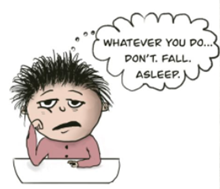But treating Standard Operating Procedures as “Must Do,” “Make Work,” means you are missing a huge opportunity. Maybe even a transformative opportunity. Dubious? Let me try to convince you.
Let’s Start With the Learning Curve

My favorite example is the classic vignette of a very tired parent assembling a toy late Christmas Eve. Mine was a lego “Princess Palace” with about 300 teeny tiny pieces and people. Under the influence of too much eggnog, it was very tough. Like impossible-level tough. But…if I had the chance to assemble that Princess Palace 10 times, and without the eggnog, you can bet I would complete it in a small fraction — perhaps 10% — of the time it took on the first try.
Those ten iterations illustrate the power of the learning curve, which it turns out is more than an idea; it is science. Many studies have measured the learning curve effect, and in manufacturing, a dramatic productivity improvement is actually calculated into business plans. And it goes way back.
In 1936, Theodore Paul Wright described the effect of learning on production costs in the aircraft industry and proposed a mathematical model of the learning curve. And in 1968, Bruce Henderson of the Boston Consulting Group (BCG) generalized the model. He named his version the experience curve, and later research observed experience curve effects for various industries that ranged from 10 to 25 percent (thanks Wikipedia).
So the learning curve is a thing, it is real, and you can leverage it. BUT ONLY IF YOU DO THE SAME THING MULTIPLE TIMES!
If you do not have a standard process… if you make things up as you go along… then you cannot harness the power of the learning curve. And that is where SOPs come in.
Enter the Standard Operating Procedure
And the result can be transformative because repeatable, high-quality, and cost-efficient execution is the fuel for rapid growth.
My example so far may seem unrelated to your work, assuming you are a Clinical Operations professional. You do not assemble things, you design, plan and manage processes. But processes are subject to the experience curve effect as well.
Want an example of the transformative impact of SOPs on process excellence and efficiency? Let’s talk about McDonald’s. I was at a board meeting for the Soup Kitchen in my city, and we were talking about how hard it is to find high performing staff members, especially now. And two other board members started talking about how McDonald’s alumni are THE best employees. And it turned out these two successful business people are McDonald’s alumni themselves.
Why McDonald’s? Well there are probably several reasons, but one thing that stands out to me is the degree of adherence to standard processes that McDonald’s inculcates in its employees. At Micky Dees, EVERYTHING is covered by an SOP, from greeting the customers to mopping the floor. And the result, of course, is high quality service, clean facilities and a consistent experience. And that means people who grew up in the McDonald’s environment — or at least those who succeeded — learned how to follow a documented procedure with diligence. And that’s why we want to hire them at the Soup Kitchen.
My point is that of all the things that make McDonald’s, well, McDonald’s, the lowly SOP (and the associated training and culture) may be the most important.
It’s About SOPs “AND” Training and Culture
Managing SOPs as standalone documents and tracking them on a spreadsheet does not work effectively. They become archival documents, useful in an audit but with no real power to drive improvements in quality or efficiency. An SOP management system is essential to get those benefits.
An SOP management system includes capabilities that are key to harnessing the power of the learning curve. These systems allow you to create SOPs in a standard format, track the version and force reviews and updates, and track training activities for the staff members charged with executing those SOPs.
So SOPs become living documents, actively practiced procedures that are repeated and updated periodically. In addition, and as a side benefit, SOP management systems ensure that the management of SOPs all happens in a way that is consistent with regulatory requirements and creates an inspection-ready environment.
